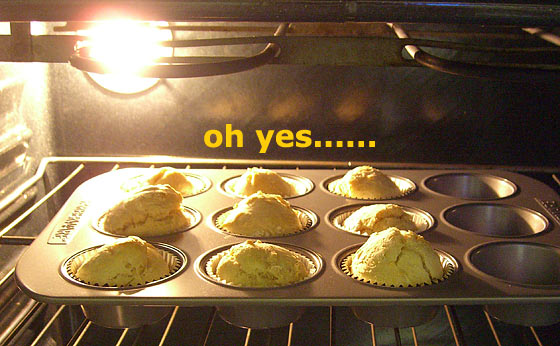How To Make Self Rising Flour & Biscuits Without Yeast

Self rising flour does not require yeast.
So lets make some biscuits…
(recipes below)
Baking Powder For Self Rising Flour
Baking powder is the key ingredient for self rising flour.
Rumford (Aluminum-free) Baking Powder
It is a leavening agent that releases carbon dioxide when moistened. The process makes tiny air bubbles in baked goods which cause them to expand and become lighter while baking.
Technical:
Baking powder contains 3 ingredients:
Sodium bicarbonate (Baking Soda)
Monocalcium phosphate (acid salt)
Cornstarch (filler and moisture absorbent)Baking powder works by releasing tiny carbon dioxide gas bubbles into a batter or dough. It is a reaction between the baking soda (sodium bicarbonate) and acid/salt (monocalcium phosphate) when exposed to moisture. The bubbles in the wet mixture expand and thus leavens the mixture.
Self rising flour (and baking powder) does not require refrigeration (maybe a good thing for the preparedness kitchen!).
It’s not a living organism like yeast. So long as you keep it dry, the unopened shelf life can be years (once opened it will lessen depending on environmental conditions such as humidity).
Test Your Baking Powder
To test your baking powder for efficacy, add about 1/2 tsp to some hot water in a cup. If it foams and bubbles, it has enough ‘zip’. If it just sits there, well, it’s no good…
Self Rising Flour Recipe
1 Cup of milled Flour
1-1/2 teaspoon Baking Powder
1/2 teaspoon Salt
Stir /mix until well blended together. That’s it!
Self Rising Flour Biscuits Recipe
In the spirit of cross-training in the kitchen, I decided to try my hand at making something edible from my self rising flour. I actually surprised myself by successfully making a simple but tasty batch of biscuits.
All the ingredients used require no refrigeration, making this a reasonable food prep for preparedness without electricity.
I only cheated by using the oven for baking. However you could substitute by cooking over a fire (dutch oven?), or using a solar oven, or even improvising by using a covered pan on low heat over a hot burner.
Related: Cast Iron Cooking & Cookware Tips
This makes 8 or 9 biscuits.
First mix all the dry ingredients well.
2 cups flour
1 Tablespoon baking powder
1/2 teaspoon salt
1/8 cup sugar
4 Tablespoons powdered butter (or 1/4-cup real butter)
1 Tablespoon powdered egg (or 1 real egg)
Then add 1 cup water and mix well.
This will produce a sticky blend of dough. Unlike a yeast mixture, the self-rising-flour does not ‘rise’ prior to cooking. The rise will happen as it cooks.
I spooned the mixture into foil baking cups.
Bake at 375-degrees for 25-30 minutes until golden.
It doesn’t rise like a traditional loaf of bread would, but it makes for a tasty biscuit.
Biscuits Recipe – on Cast Iron
(from a reader here on the blog – a previous post)
“I make biscuits all the time because they’re a quick bread.”
I use the Lodge Cast Iron biscuit pan (can be purchased via Amazon).
Here’s my tried-and-true recipe:
Cast Iron Baked Biscuits
2 cups flour
1 Tablespoon. baking powder
1 teaspoon. salt
1/4 cup shortening (or lard)
1 cup milk
Preheat oven to 450-degrees F.
In bowl, mix flour, baking powder, and salt with fork. Cut in shortening (or lard) with 2 knives or pastry blender until mixture resembles coarse crumbs. Add milk. Gently mix until mixture forms soft dough that leaves the side of the bowl.
Prepare biscuits by gently rolling into individual biscuit-size rolls, each about 2.5-inches around.
Place rolled-biscuits into greased cast-iron biscuit skillet. Bake at 450-degrees for about 14 minutes, or until lightly browned. Makes 7 large biscuits.
